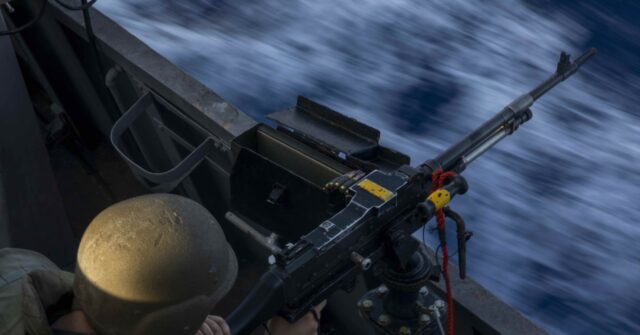Israeli commandos executed a significant raid in northern Lebanon, resulting in the capture of Imad Amhaz, a high-ranking official within Hezbollah’s naval forces. The operation, confirmed by the Israeli military, marked an exceptional maneuver deep into Lebanese territory. Reports indicate that Israeli special forces approached the coast of Batroun, located south of Tripoli, from the sea and targeted a chalet used by Amhaz. This swift operation involved seizing the Hezbollah operative and retreating by speedboat, highlighting the audacity and precision of Israel’s military capabilities.
Hezbollah’s naval branch has historically not played a prominent role in the ongoing conflicts with Israel, where air strikes and ground commandos have taken center stage. However, the capture of Amhaz signifies a potential shift in the strategic landscape. The Israeli Defense Forces (IDF) view him as a “significant source of knowledge” regarding Hezbollah’s naval operations, which have remained relatively dormant compared to their land and air strategies. This operation could bring critical intelligence about Hezbollah’s naval capabilities and strategic intentions, impacting future engagements and operational planning.
The context for this raid also reflects broader regional security dynamics, particularly concerning maritime operations by terrorist organizations. The recent conflict’s trajectory was notably altered when Hamas utilized naval commandos in a successful infiltration along Israel’s southern coastline on October 7. This attack led to significant casualties before Israeli forces managed to eliminate the Hamas operatives. In response, Israel took decisive action by demolishing the Gaza port facilities that had facilitated both this incursion and the smuggling of weapons into the region. This underscores the evolving nature of warfare, where maritime elements are becoming increasingly prominent.
The incident draws attention to the ongoing tension between Israel and Hezbollah, highlighting how both sides continually adapt their tactics and strategies. While Hezbollah has traditionally been more focused on ground-level engagements, the emergence of its naval capabilities, albeit underdeveloped, poses a potential threat. Reports concerning Amhaz’s expertise suggest that Hezbollah might be looking to expand its operational scope on the water, an area that could lead to new forms of confrontations between the group and the IDF. Israel’s preemptive actions may be interpreted as an effort to dismantle any potential future threats before they materialize.
Moreover, the operation’s outcome could have ramifications on Hezbollah’s morale and operational planning. The loss of a high-ranking member, particularly one involved in naval strategies, can disrupt communications and future operations within the group. It also serves as a reminder to Hezbollah that Israeli forces possess the capability and willingness to strike deep into enemy territory. This can potentially encourage other groups in the region to reassess their own security and operational measures in the wake of such a daring action by Israel.
In conclusion, the Israeli raid that led to the capture of Imad Amhaz underscores the complexity of current Middle Eastern conflicts, where maritime capabilities are becoming a focal point. As terrorist organizations enhance their potential for maritime operations, Israel’s proactive stance could be seen as both a strategic necessity and a message of deterrence. The significant implications of this operation could reshape the tactical approaches of both Hezbollah and Israel, illustrating the unpredictable nature of modern warfare and the increasingly multidimensional landscape in which it plays out.

